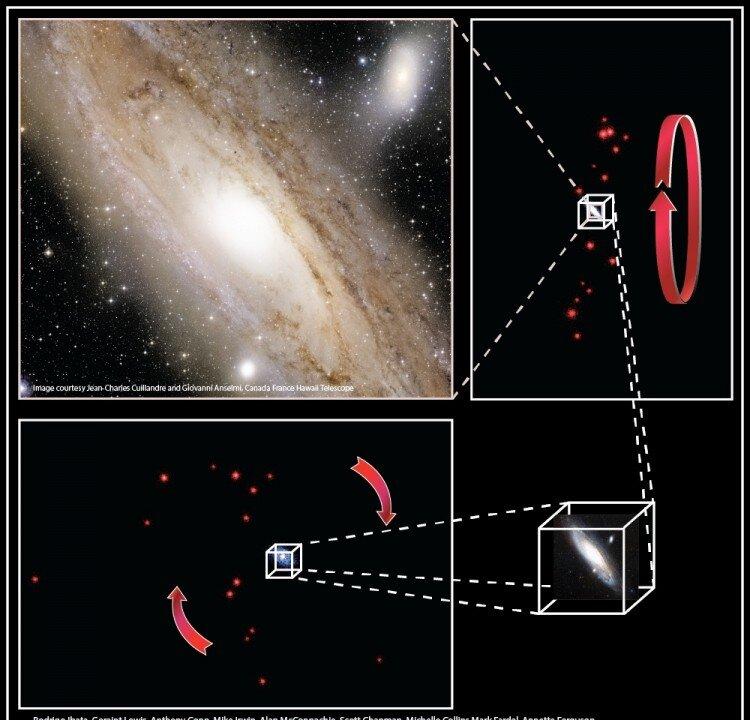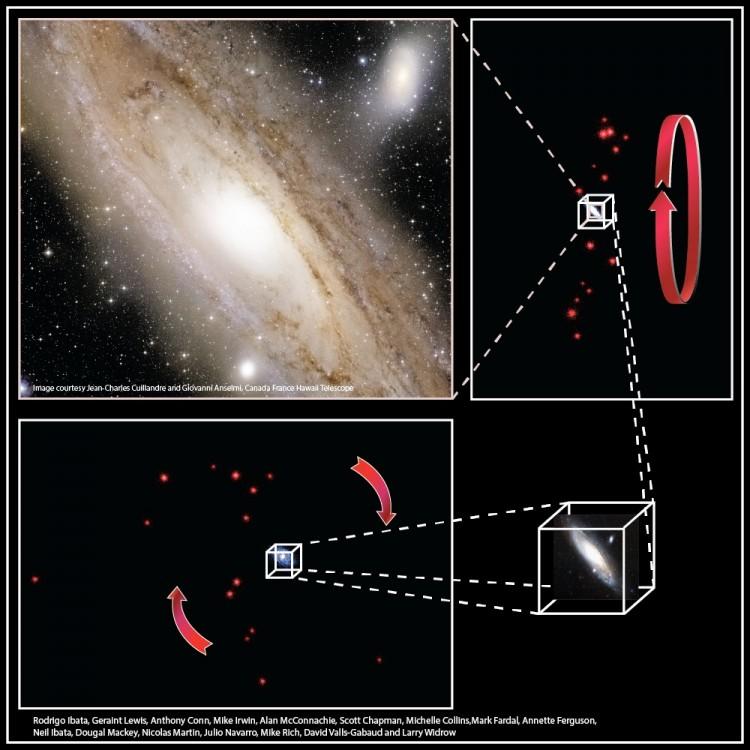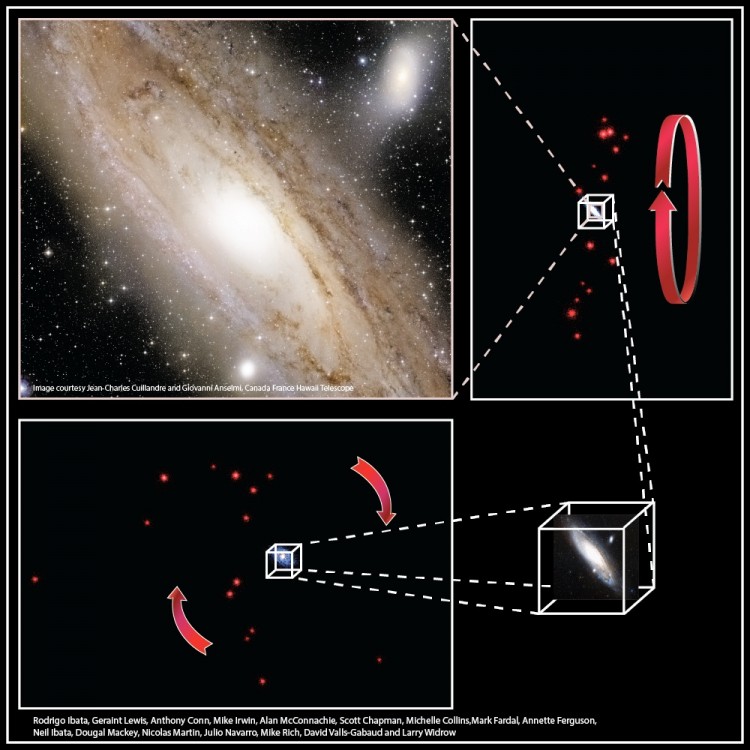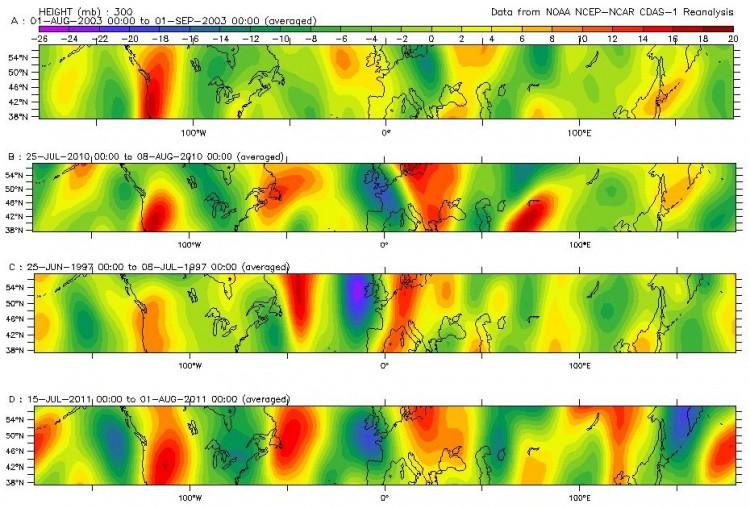Our neighboring galaxy Andromeda is being circled by about 30 smaller galaxies, half of which are in a vast thin plane like a pancake.
Larger galaxies like our own are orbited by many dwarf galaxies, but their paths were thought to be independent of each other. This new finding is leading astronomers to question their understanding of galaxy formation and evolution.
“Astronomers have been observing Andromeda since Persian astronomers first noted it over a thousand years ago, but it is only in the past decade that we have truly studied it in exquisite detail with the Pan-Andromeda Archaeological Survey,” said study lead author Geraint Lewis at the University of Sydney in a press release.
“When we looked at the dwarf galaxies surrounding Andromeda, we expected to find them buzzing around randomly, like angry bees around a hive.”
“Instead, we’ve found that half of Andromeda’s satellites are orbiting together in an immense plane, which is more than a million light years in diameter, but only 30,000 light years thick.”
Lewis said that the probability of this arrangement being random is almost zero. “It really is just weird,” he added.
“Dwarf galaxies are the most numerous galaxy type in the universe, so understanding why and how they form this disc around the giant galaxy is expected to shed new light on the formation of galaxies of all masses.”
The study was published in Nature on Jan. 3.
The Epoch Times publishes in 35 countries and in 20 languages. Subscribe to our e-newsletter.





